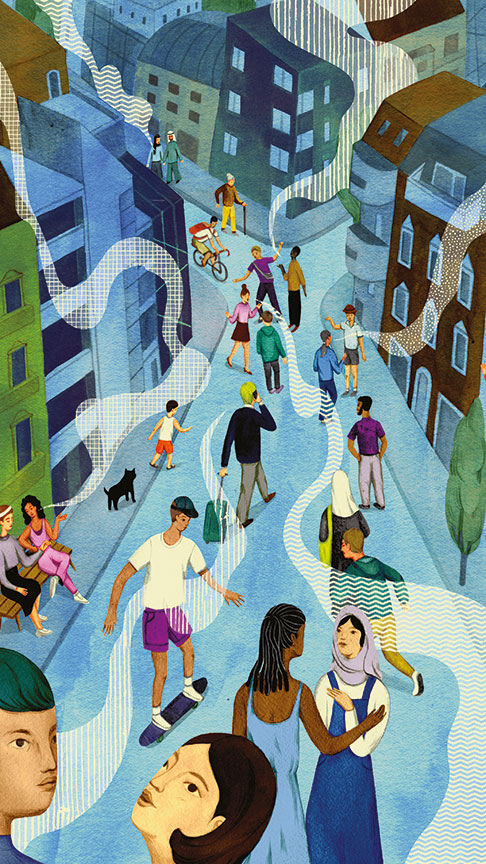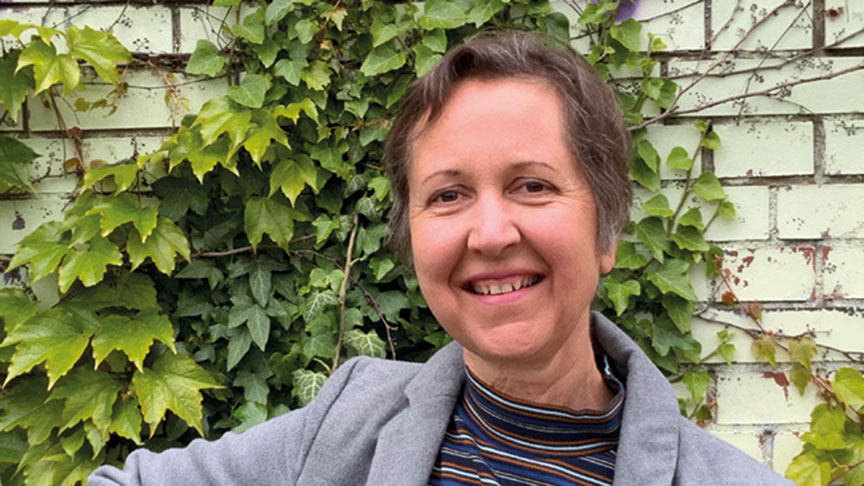Societies that long viewed themselves as predominantly monolingual are nowadays witnessing growing multilingual dynamism as a result of globalisation, increased international networking and migration. While my generation for example knew English as a foreign language taught at school, many young people in Germany today routinely watch American series in the original version, follow English-speaking influencers on YouTube and write their TikTok posts in English. In their text messages they combine German not only with English but also with languages that they know as the native tongues of their parents, grandparents or friends.
In multilingual urban settings this linguistic diversity has spawned a phenomenon known in German as “Kiezdeutsch”, an urban dialect whose vocabulary is enriched by new words such as the Turkish “lan” (“guy”), the Arabic “habibi” (“darling”), the Russian “brat” (“brother”) or the English “nice”, and on a grammatical level expands on and pushes forward ongoing developments in German. And even at urban markets, we find a diverse range of languages. At Maybachufer market in Berlin, for instance, we observed how traders continually broaden their linguistic repertoire, taking advantage of these resources in their interactions with customers, without allowing themselves to be confined by linguistic boundaries. In this context, multilingual grammatical patterns can evolve – a kind of “market grammar system” that provides a framework for certain expressions and allowing, if necessary, the incorporation of words from other languages.
Such linguistic diversity is often regarded as something entirely novel and challenging for our society. Far from being unusual, however, multilingualism is in many cases the norm. Human communities have always been shaped by language variation and contact with others. This is particularly (though not exclusively) noticeable in cities, which have always been a focal point for social and linguistic diversity.
Mediaeval towns in Germany brought together not only different regional dialects but also a diverse collection of languages that included High and Low German, Latin as the language of education and religion in Christian communities, Hebrew and Aramaic as written languages, and Yiddish as the colloquial language spoken by Jewish communities. Additionally, languages such as Romani, Sorbian and Danish, still spoken as minority languages in Germany today, were added to the mix, as were many other languages introduced through foreign business relations between merchants or by students and migrants from other countries. Mixing different languages has therefore always been an integral part of language use. Among 16th-century scholars for example it was the done thing to combine German and Latin, as evidenced by the after-dinner speeches given by Martin Luther. The letters that Liselotte von der Pfalz wrote in the 17th and 18th centuries became famous not least for their virtuoso blend of French and German, while the Prussian statesman and reformer Freiherr vom Stein incorporated both these languages into letters to his wife, for instance.
Multilingualism and multilingual practices are nothing new, in other words, but were already the norm in the past. What is more unusual is monolingualism. Studies in the fields of psycholinguistics and neuroscience have revealed a series of cognitive advantages of multilingualism, such as improved reflective capacity, attentional control, cognitive flexibility, working memory, creativity and the later onset of mental degeneration in old age. Viewed in this way, it is rather monolingualism that is the problem: a linguistic deficiency that can entail cognitive disadvantages.


